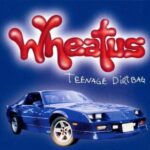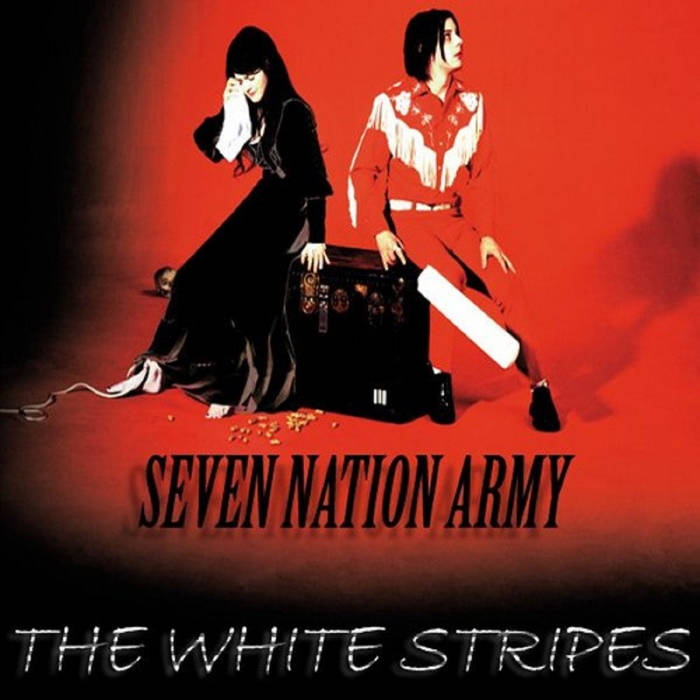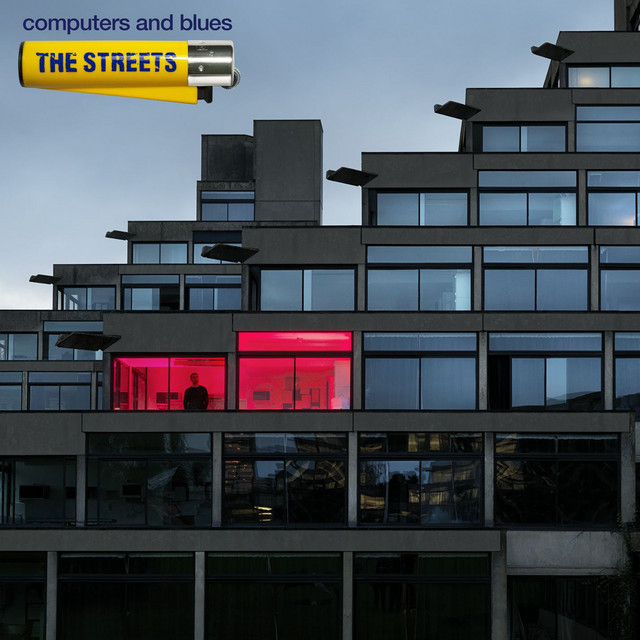 When Wheatus released “Teenage Dirtbag” in 2000, it became an instant cultural touchstone, capturing the awkward energy, longing, and unfiltered honesty of adolescence in a way few songs had before. The track, which opens with an instantly recognizable electric guitar riff and thumping rhythm, announced Wheatus as a band capable of channeling the disaffected teenage experience into a pop-rock anthem that was both catchy and deeply relatable. Written and sung by Brendan B. Brown, the song is a narrative-driven piece that tells the story of teenage alienation, unrequited love, and the bittersweet joys of youth. Its impact was immediate, propelling it to the top of charts in multiple countries and embedding it into the soundtrack of a generation grappling with identity, popularity, and the pangs of early romance.
When Wheatus released “Teenage Dirtbag” in 2000, it became an instant cultural touchstone, capturing the awkward energy, longing, and unfiltered honesty of adolescence in a way few songs had before. The track, which opens with an instantly recognizable electric guitar riff and thumping rhythm, announced Wheatus as a band capable of channeling the disaffected teenage experience into a pop-rock anthem that was both catchy and deeply relatable. Written and sung by Brendan B. Brown, the song is a narrative-driven piece that tells the story of teenage alienation, unrequited love, and the bittersweet joys of youth. Its impact was immediate, propelling it to the top of charts in multiple countries and embedding it into the soundtrack of a generation grappling with identity, popularity, and the pangs of early romance.
Musically, “Teenage Dirtbag” is deceptively simple yet meticulously constructed. The opening riff, sharp and slightly distorted, immediately establishes a tone of playful rebellion, evoking the feeling of sneaking out, breaking rules, or daydreaming in a suburban high school. The bass and drums lock into a driving, mid-tempo rhythm that keeps the song moving forward, propelling the story along with kinetic energy. Brendan Brown’s vocals are conversational yet emotive, narrating the story of a misunderstood teenager with a mix of resignation and hope, which makes the character he portrays instantly relatable. This combination of melodic pop sensibilities with alternative rock instrumentation helped the track resonate with a wide audience, bridging the gap between mainstream radio and alternative youth culture.
The lyrics of “Teenage Dirtbag” are where the song’s genius truly shines. Brown crafts a narrative of adolescent yearning with incredible clarity and economy, painting a vivid picture of a young protagonist who feels like an outcast while obsessing over a girl seemingly unattainable. Lines such as “Her boyfriend’s a dick, he brings a gun to school” and “I’m just a teenage dirtbag, baby, yeah” convey both humor and pathos, capturing the raw, unfiltered emotion of teenage life. The song resonates with listeners not because it glamorizes rebellion or victimhood, but because it articulates feelings that are universal to many adolescents: the sense of invisibility, the pangs of unreciprocated attraction, and the bittersweet acceptance of one’s outsider status. The specificity of the lyrics—the mention of the girl’s boyfriend, the reference to Iron Maiden—grounds the song in a cultural moment, making it feel authentic rather than generic.
One of the key factors in the song’s enduring appeal is its use of storytelling. Unlike many pop-rock tracks of the era that relied heavily on broad, generalized emotions, “Teenage Dirtbag” tells a clear and compelling story with distinct characters and plot points. The protagonist’s inner monologue and observations create a cinematic quality, making listeners feel as though they are following a narrative unfold in real time. This storytelling approach, combined with catchy hooks and singable choruses, ensures that the song works both as a standalone narrative and as a participatory anthem at concerts or sing-alongs. The chorus, in particular, is instantly memorable, inviting listeners to embrace the self-deprecating label of “teenage dirtbag” as a badge of honor rather than shame.
Culturally, the song landed at a moment when alternative rock and pop-punk were converging with mainstream radio. Bands like Blink-182, Sum 41, and Good Charlotte were gaining traction with youthful, high-energy tracks that dealt with themes of rebellion and adolescent angst. However, “Teenage Dirtbag” distinguished itself through its narrative depth and wry humor, offering a more character-driven perspective rather than relying solely on angst or adolescent braggadocio. Its resonance was further amplified by its inclusion in the 2000 film Loser, starring Jason Biggs and Mena Suvari, which helped cement the song’s association with the awkward, often humorous, struggles of teenage life. The music video, which blends live-action sequences with surreal animation, further reinforced the song’s quirky and relatable identity, emphasizing the protagonist’s feelings of alienation and fantasy.
The instrumentation of “Teenage Dirtbag” deserves attention for how it enhances the storytelling. The jangly electric guitar riff that opens the song immediately sets a tone of lighthearted rebellion, while the rhythmic drive of the bass and drums keeps the narrative moving forward. The bridge introduces subtle shifts in dynamics and melodic phrasing that mirror the protagonist’s emotional fluctuations, from anxious longing to gleeful self-acceptance. Brendan Brown’s vocal delivery adapts fluidly to these changes, transitioning seamlessly between deadpan narration and emotive peaks, ensuring that the story remains compelling and engaging throughout. The overall production is clean yet retains an edge that reflects the DIY ethos of alternative rock at the turn of the millennium, avoiding the overly polished sound of mainstream pop while maintaining accessibility.
Another element that contributes to the song’s lasting popularity is its lyrical specificity paired with universal themes. Brown’s references to Iron Maiden, high school dynamics, and social hierarchies situate the song firmly in a cultural context, yet the emotions it conveys—desire, alienation, self-consciousness—remain timeless. Teenagers in the early 2000s could immediately relate to the protagonist’s experience, and subsequent generations have continued to find resonance in its themes, demonstrating the song’s universality. There is an honesty to the song that makes it endearing: it neither glamorizes nor trivializes adolescent struggles but presents them with a mix of humor, pathos, and empathy.
The chorus, with its repetition of “I’m just a teenage dirtbag, baby,” functions as a unifying chant for listeners who identify with the narrator’s outsider status. It’s an inclusive moment that transforms the label “dirtbag” into a symbol of solidarity and self-acceptance. This aspect of the song has contributed to its longevity as an anthem for outsiders, nerds, and anyone who has ever felt out of place. Sing-alongs at concerts, karaoke sessions, and viral covers on social media platforms attest to its enduring ability to connect with audiences across generations.
“Teenage Dirtbag” also demonstrates a clever balance of humor and earnestness. While some lyrics are exaggerated for comedic effect, they never undermine the emotional truth of the protagonist’s experience. The humor softens the melancholy and makes the song accessible to listeners who might otherwise be alienated by pure angst. This balance is a hallmark of Brendan Brown’s songwriting, showing his ability to navigate the complexities of adolescent emotion with both empathy and wit. The song’s appeal lies in this duality: it is at once funny, poignant, and relatable, allowing it to resonate on multiple levels simultaneously.
From a production standpoint, the song benefits from a straightforward yet effective arrangement that keeps the focus on the narrative. The instruments are balanced to allow the vocals to take center stage, ensuring that the story remains clear and compelling. The guitar riffs and melodic lines provide texture and interest without overwhelming the lyrics, while the rhythm section maintains a steady drive that mirrors the protagonist’s restless energy. Subtle production touches, such as echo effects on certain vocal lines, enhance the sense of space and emotional depth, contributing to the song’s immersive quality.
The song’s impact on pop culture has been significant. Beyond its chart success, “Teenage Dirtbag” has become synonymous with the early-2000s cultural landscape, emblematic of the awkward, rebellious energy of the era. It has appeared in films, television shows, and commercials, often used to evoke nostalgia or highlight themes of outsiderdom and teenage struggle. Its continued relevance in online culture, including memes and covers on platforms like YouTube and TikTok, demonstrates its lasting appeal and ability to connect with new audiences. The song has transcended its original moment, becoming a touchstone for anyone reflecting on the awkwardness, humor, and poignancy of youth.
Critically, the song was praised for its wit, catchy melody, and narrative approach, distinguishing Wheatus from many of their contemporaries. While some dismissed it as a novelty at the time, its enduring popularity has proven its merit, revealing a song that is more than a fleeting hit but rather a carefully crafted narrative with musical and lyrical sophistication. Its ability to straddle the line between pop accessibility and alternative rock authenticity ensures that it remains a standout track in both genres.
Live performances of “Teenage Dirtbag” further underscore its enduring power. Brendan Brown’s energetic delivery, combined with the band’s tight instrumentation, transforms the song into a communal experience, allowing audiences to participate in the protagonist’s story. The crowd’s engagement, from singing along to waving hands in unison, demonstrates the song’s ability to foster a sense of shared identity and catharsis. These performances often highlight the playful, theatrical elements of the track, reinforcing its status as an anthem for misfits and outsiders alike.
The song’s structure also contributes to its effectiveness. The verses establish the narrative with clear, relatable imagery, the pre-chorus builds anticipation, and the chorus delivers a memorable emotional payoff. This structure, combined with dynamic shifts in instrumentation and vocal intensity, ensures that the song remains engaging throughout, with peaks and valleys that mirror the emotional journey of adolescence. Each section feels purposeful, contributing to the overall storytelling and emotional impact.
“Teenage Dirtbag” remains a defining moment in Wheatus’ career, representing both their artistic vision and their ability to capture the zeitgeist of the era. It is a song that bridges the gap between the humor, awkwardness, and earnestness of adolescence, offering a musical experience that is both fun and meaningful. Its influence can be seen in subsequent pop-punk and alternative rock acts that embrace narrative songwriting, humor, and relatability. The track’s continued popularity in popular culture, from soundtracks to viral online content, attests to its timelessness and enduring relevance.
In conclusion, “Teenage Dirtbag” by Wheatus is much more than a nostalgic hit from the early 2000s. It is a meticulously crafted pop-rock anthem that captures the universal experience of adolescent alienation, unrequited love, and self-discovery. Brendan Brown’s storytelling, combined with the band’s dynamic instrumentation and the song’s memorable hooks, creates an enduring work that resonates across generations. Its clever blend of humor, pathos, and musicality ensures that it remains a relevant and beloved anthem for anyone who has ever felt like an outsider. “Teenage Dirtbag” stands as a testament to the power of narrative songwriting, the enduring appeal of alternative pop-rock, and the universal, timeless experiences of youth, insecurity, and the bittersweet thrill of first crushes.
The song’s lasting legacy is evident not only in its continued popularity on streaming platforms but also in its cultural presence in films, TV, and online communities. It has become a musical shorthand for adolescent awkwardness and outsider identity, maintaining relevance long after its initial release. “Teenage Dirtbag” remains a definitive example of how a pop-rock song can transcend its era, blending storytelling, catchy melodies, and relatable themes into a timeless anthem.
Track Highlights:
-
Iconic, jangly guitar riff that immediately captures attention
-
Brendan Brown’s versatile and emotive vocal delivery
-
Narrative lyrics that balance humor, pathos, and relatability
-
Clever structure and dynamics that reflect the emotional journey of adolescence
-
Enduring cultural impact through film, media, and online platforms
“Teenage Dirtbag” continues to resonate with listeners because it captures the messy, complicated, and exhilarating experience of being a teenager. Wheatus crafted a song that is simultaneously funny, poignant, and unforgettable, a true anthem for outsiders and dreamers alike.


